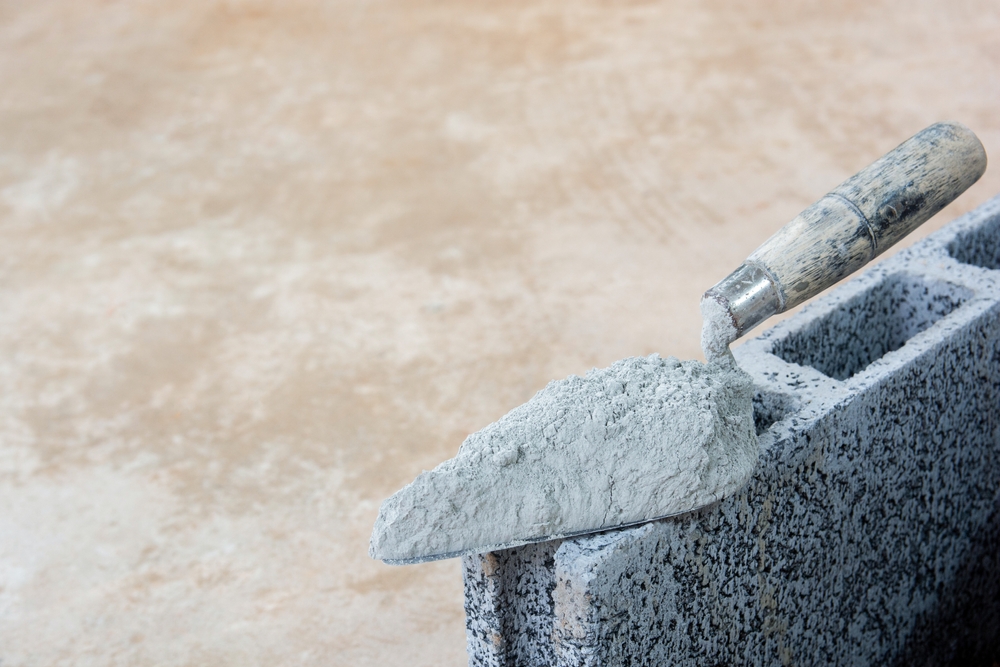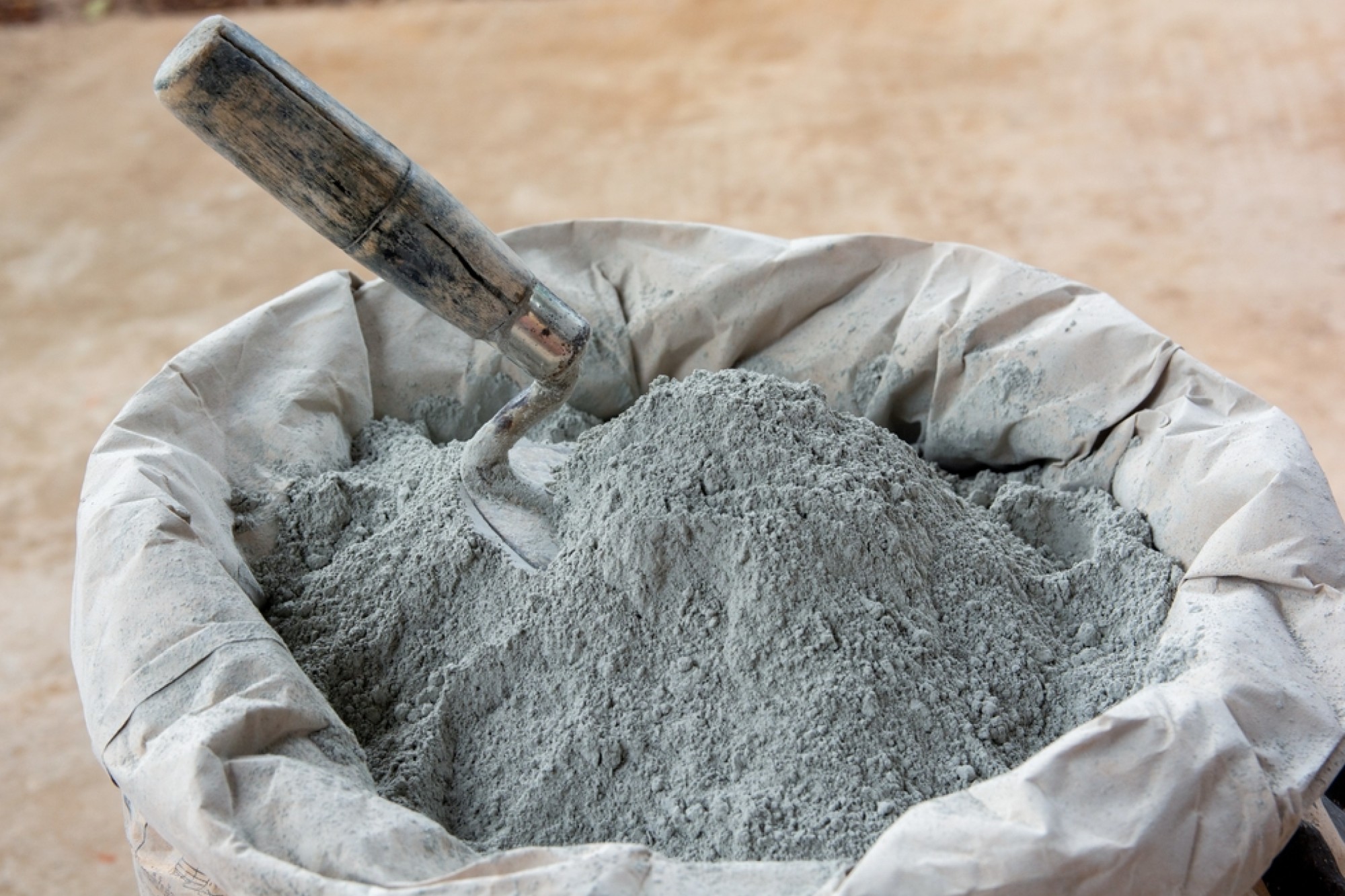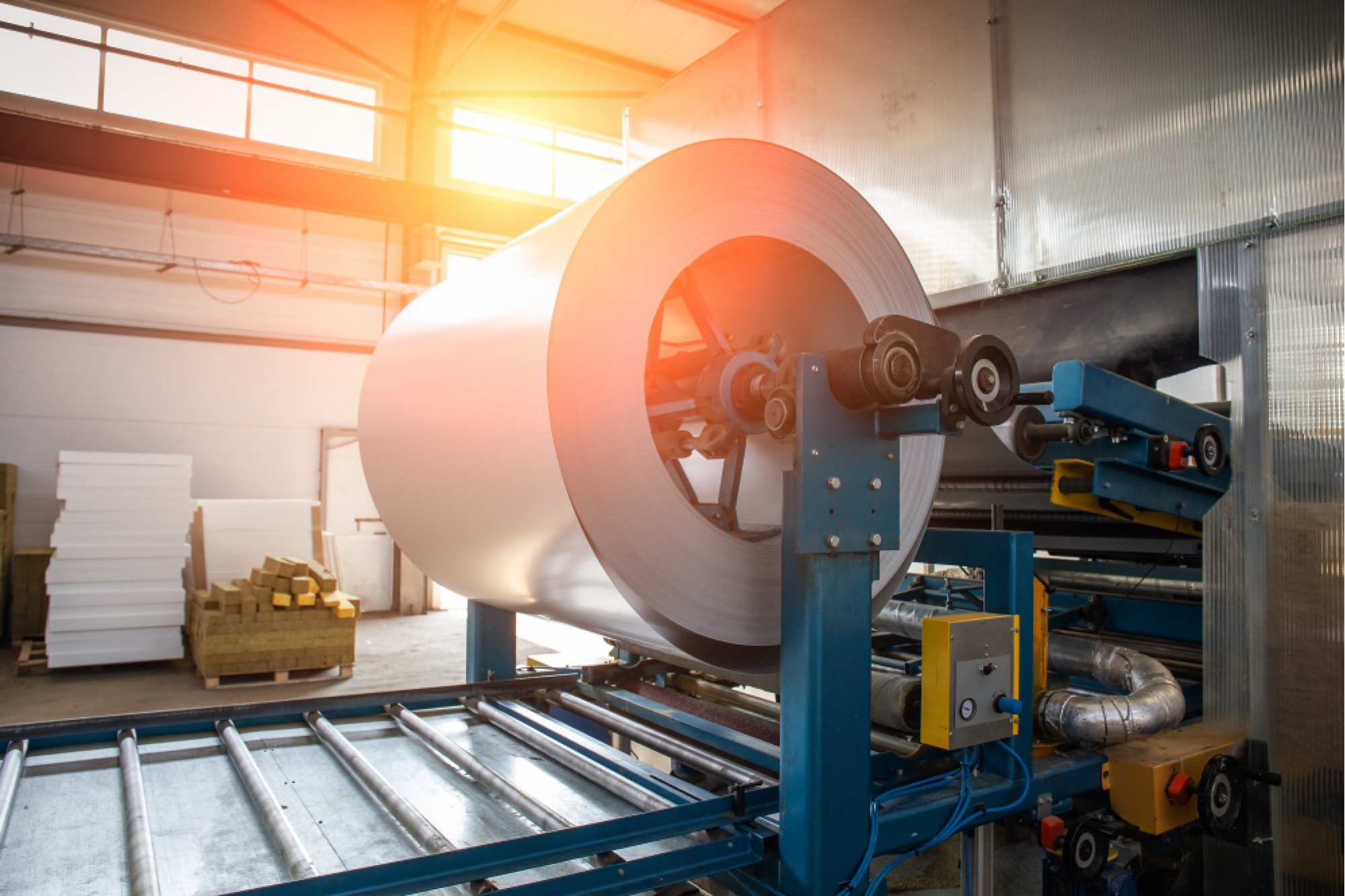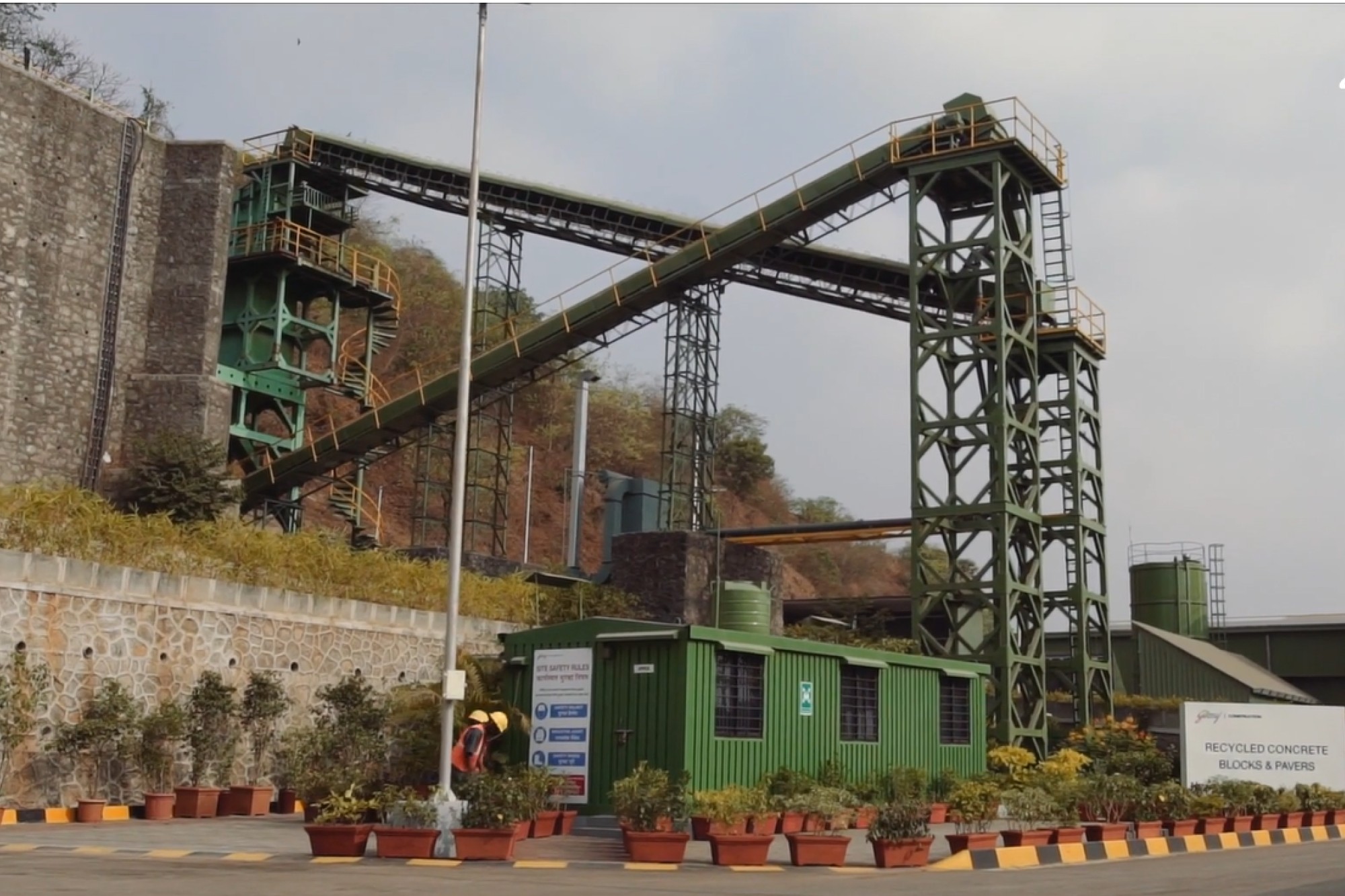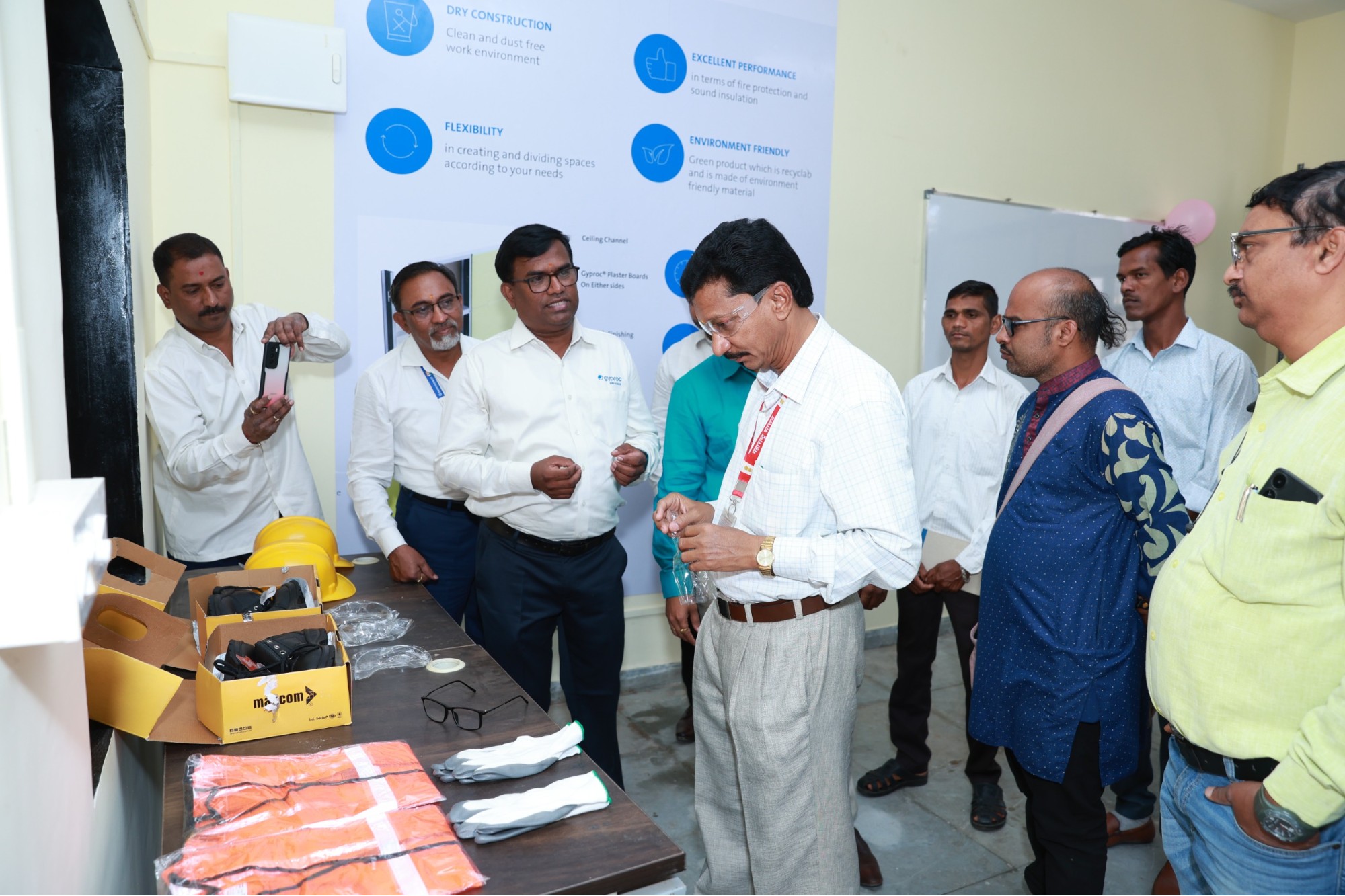Geotextiles for superior and sustainable construction performance
By Staff Report | October 25, 2024 6:02 pm SHARE
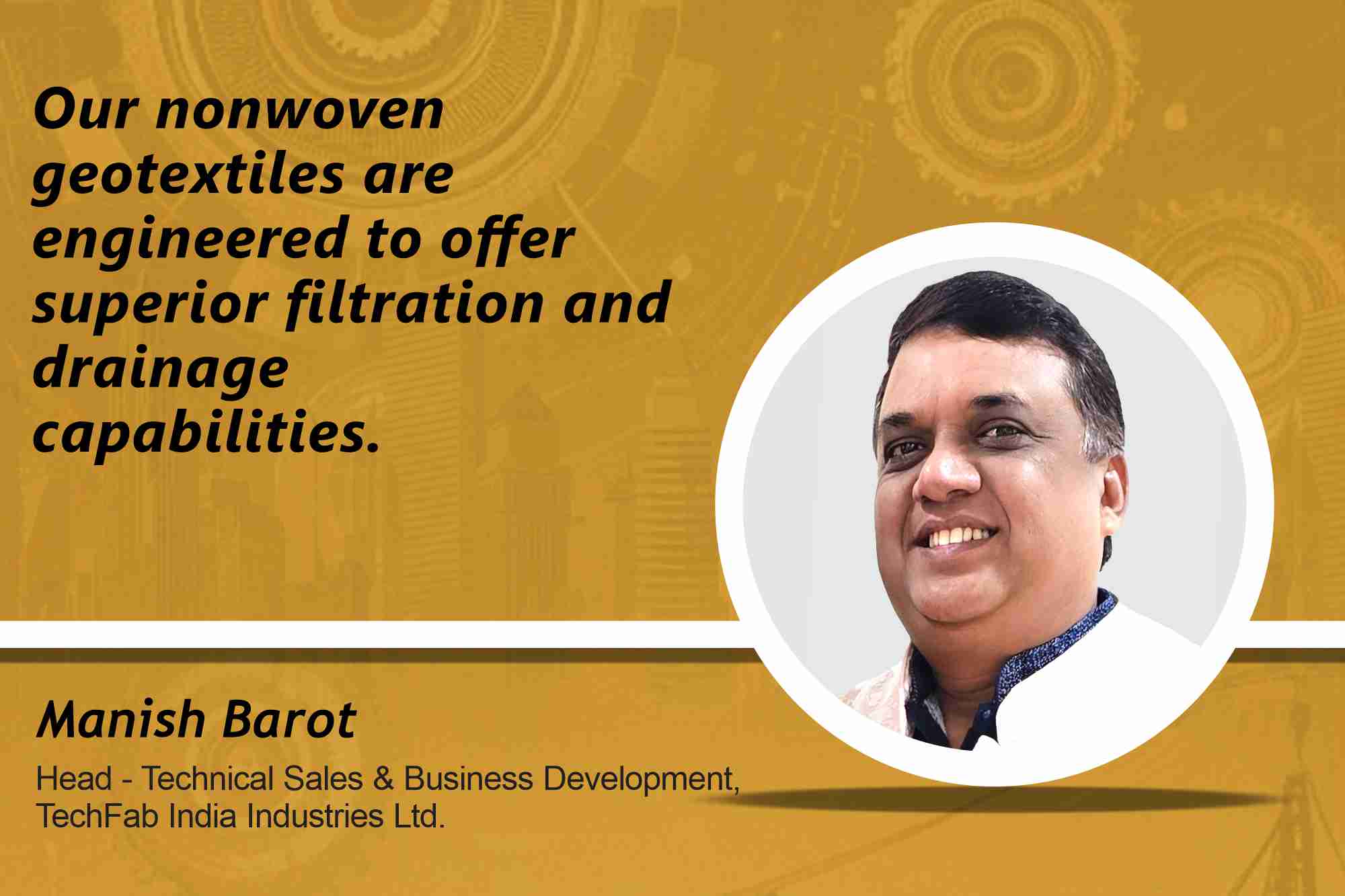
By utilising advanced polymer blends like polypropylene and polyester, TechFab’s geotextiles provide exceptional strength and durability, ensuring optimal reinforcement, filtration, and protection in challenging environments. Their continuous improvements in fabric structure and anti-clogging properties further ensure that their geotextiles meet the evolving demands of modern civil engineering projects.
How have your geogrids enhanced performance in various geotechnical applications, and in what projects have they been particularly beneficial?
TechFab manufactures various types of Geogrids, such as Uniaxial / Biaxial / Polyester / Polypropylene, as well as Tech Strap and Techlink, which are designed for various geotechnical applications.
PET Geogrids are mainly used for reinforcing soil for reinforced soil retaining structures. They are also used for Ground improvement by reinforcing weak or unstable soils, thereby improving their load-bearing capacity and reducing settlement.
PP Geogrids work by interlocking with aggregate, which distributes loads more effectively and prevents lateral movement by confining the aggregates. They are used for Pavement applications on Highways and Railways.
Overall, geogrids have key benefits, including stabilising weak soil layers, reducing differential settlement, and enhancing stability. If used in Pavement applications, they reduce the Overall thickness of the pavement, reducing construction costs without compromising overall performance. Geogrids also help control slope erosion by providing structural support as veneer reinforcement.
Techfab Geogrids are used in highways and rural roads for subgrade stabilisation, base and subbase stabilisation, asphalt reinforcement, etc. In Railway Projects, they are used for subgrade stabilisation and confinement of ballast, which results in reduced track deformation and enhanced service life.
Geogrids can be used for various geotechnical applications in all major sectors, such as Transportation, Mining, Hydraulics, Landfills, and other infrastructure projects.
Can you explain the applications and advantages of your geocells in Infrastructure Projects?
TechFab’s geocells, made from high-density polyethene (HDPE), create a three-dimensional honeycomb-like structure that confines and stabilises the infill material (such as soil, gravel, or concrete). This confinement significantly enhances the material’s structural integrity, improving load distribution and preventing erosion, deformation, or lateral movement of soil.
The Key applications of Geocells are Slope Protection, Erosion Control and Ground Improvement – Geocells are commonly used to stabilise slopes and protect them from erosion, especially on steep or uneven terrain. By confining the topsoil or aggregate, geocells prevent surface erosion caused by water runoff or wind. They are also used to vegetate slopes in environmentally sensitive areas, promoting natural growth while ensuring slope stability.
Geocells contain infill material within them, which prevents the vertical and lateral displacement of soil. This enables the support of heavy loads with reduced material requirements. In weak soil areas, geocells can improve load-bearing capacity, helping distribute vehicle loads, reduce rutting, and increase the longevity of roads and pavements.
Advantages of TechFab’s Geocells, Enhanced Load Distribution: Geocells distribute loads over a larger area, reducing stress on the subgrade and preventing localised failure, which is crucial for infrastructure subjected to heavy traffic or load variations.
Geocells allow for using locally available, lower-cost infill materials and reduce the need for excavation and thick structural layers, leading to significant cost savings.
Made from high-density polyethene (HDPE), TechFab’s geocells resist chemicals, UV exposure, and extreme environmental conditions, ensuring long-term performance. Geocells help reduce erosion, conserve materials, and integrate vegetation into infrastructure projects, promoting greener construction practices.
Overall, TechFab’s geocells are a reliable solution for improving various civil engineering projects’ stability, durability, and cost-effectiveness, particularly in challenging soil and terrain conditions.

What innovations have you introduced in your geotextiles that enhance their performance in construction applications?
We have introduced several geotextile innovations to enhance their performance across various construction applications. Our improvements focus on durability, functionality, and sustainability, ensuring that our geotextiles deliver superior reinforcement, filtration, separation, and protection in even the most demanding environments. One of our key advancements lies in using high-strength materials, especially advanced polymer blends like polypropylene (PP) and polyester (PET). These polymers provide exceptional tensile strength, allowing our geotextiles to withstand higher loads in reinforcement and stabilisation applications—crucial for projects like road construction, retaining walls, and embankments, where load-bearing capacity is critical. Our materials are highly durable and resistant to environmental degradation, including UV exposure, chemicals, and extreme weather conditions, ensuring they maintain top performance over the long term.
We have also made significant strides in fabric structure specialisation. Our nonwoven geotextiles, for instance, are engineered to offer superior filtration and drainage capabilities, with high permeability rates that allow water to pass through while preventing soil and particles from migrating. This makes them highly effective in drainage systems, landfills, and erosion control projects. In contrast, our woven geotextiles are ideal for separation and reinforcement, featuring a tight weave structure that ensures excellent load distribution and stability—perfect for road construction, soft soil stabilisation, and rail projects. Additionally, we have pioneered composite geotextiles that combine the benefits of woven and nonwoven technologies. These hybrid materials offer enhanced mechanical properties, including improved puncture resistance and tensile strength, making them suitable for demanding applications like landfill capping and heavy-duty road construction.
Our focus on enhanced filtration and drainage performance has led us to engineer precise pore size distribution in our geotextiles, ensuring that fine soil particles are retained while water flows freely. This makes our geotextiles exceptionally effective for retaining walls, embankments, and erosion control systems. We designed our geotextiles with anti-clogging properties to optimise long-term efficiency further to prevent soil particles from blocking the fabric’s pores.
We offer UV-stabilised and weather-resistant geotextiles to meet the challenges of projects with prolonged sunlight exposure. These geotextiles are equipped with UV resistance to prevent material degradation over time, a feature especially important in erosion control, coastal protection, and exposed slope stabilisation applications. These innovations make our geotextiles a cutting-edge solution for diverse and challenging construction projects, blending strength, efficiency, and sustainability to deliver optimal performance.
What types of geocomposites do you offer, and how do they provide integrated solutions for drainage and containment challenges?
We offer various geocomposites designed to provide integrated solutions for drainage, filtration, separation, and containment challenges across various civil engineering and environmental projects. Our geocomposites combine two or more types of geosynthetics, such as geotextiles, geomembranes, geogrids, or drainage cores, to create multifunctional products that enhance performance and simplify installation. These solutions are meticulously engineered to meet the specific needs of projects that involve complex interactions between soil, water, and structural elements.
One of the main types of geocomposites we provide is our drainage geocomposites. A key product in this category is the Geonet-Geotextile Composite, also known as Geonet Drainage Composites. These composites consist of a geonet core placed between two layers of geotextiles, with the geonet forming a high-flow drainage channel and the geotextiles preventing soil particles from entering and clogging the system. This type of geocomposite is commonly used for subsurface drainage in roadways, retaining walls, and green roofs. We also offer geomembrane-bentonite liners, often used in waste containment projects. The clay swells when hydrated in these applications, creating a reliable barrier that prevents seepage and leakage.
Our offerings also include asphalt reinforcement geocomposites, such as GlassGrid-Geotextile Composites. These products combine a Glass geogrid with either a nonwoven or woven geotextile. The Glass geogrid provides tensile reinforcement, while the geotextile adds a moisture barrier, separation, and filtration capability. This type of geocomposite is typically used as asphalt reinforcement to prevent reflective cracking and improve pavement performance.
Our geocomposites deliver a comprehensive and integrated approach to solving drainage, containment, and reinforcement challenges, ensuring that civil engineering projects achieve optimal performance with reduced environmental impact and lower costs.
How do your geosynthetic solutions contribute to sustainable construction practices?
Our geosynthetic solutions contribute significantly to sustainable construction practices by offering environmentally friendly alternatives that reduce resource use, minimise environmental impact, and enhance the durability of infrastructure projects. Through efficient design, a reduced carbon footprint, and adaptability to environmentally sensitive projects, our geosynthetics support and promote sustainability in construction.
One major way our geosynthetics support sustainable construction is by reducing the use of raw materials. By reinforcing and stabilising soils, they eliminate the need for excess fill material, allowing for efficient material use. Additionally, geosynthetics extend infrastructure life by providing long-term protection and reinforcement, which reduces the frequency of repairs and replacements. This durability factor is essential for minimising material consumption and maintenance resources. Our geosynthetics are also designed to contribute to carbon footprint reduction. By improving soil conditions and allowing for the construction of lighter structures, they cut down on the emissions associated with material transport and construction processes.
We also support green building practices, as our geosynthetics enable architects and engineers to design with sustainability in mind. They make it easier to meet green certification requirements by enhancing water management, energy efficiency, and infrastructure durability. Moreover, our geosynthetics help maintain the natural ecosystem by reducing land disturbance. They provide essential support to prevent erosion and land degradation, making them ideal for environmentally sensitive zones.
In addition to supporting sustainable construction methods, our geosynthetics facilitate effective waste management and containment. They are widely used in landfills, leachate containment systems, and other areas where secure waste storage is crucial, thereby protecting soil and water resources. Lastly, our solutions are vital in restoring degraded lands, such as former mining or industrial sites, by providing erosion control and soil stabilisation for revegetation efforts. By integrating geosynthetics into construction projects, we help reduce the environmental impact of construction, promote efficient use of resources, and contribute to the long-term sustainability of infrastructure.
For more information, visit: https://www.techfabindia.com/
Cookie Consent
We use cookies to personalize your experience. By continuing to visit this website you agree to our Terms & Conditions, Privacy Policy and Cookie Policy.



